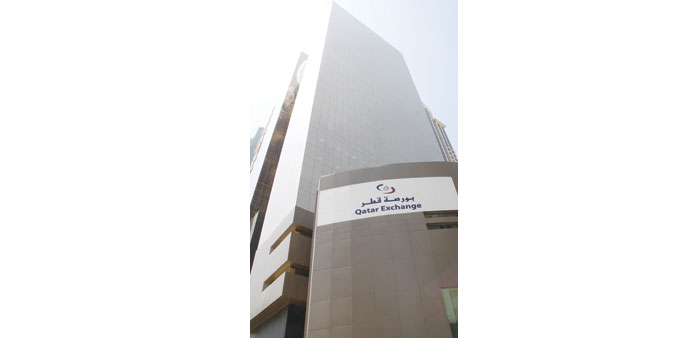The stock exchange has submitted proposals for higher limits on foreign ownership; Step taken ahead of MSCI upgrade next May; Cites increase in account-opening by international investors; Will facilitate listings by firms in Qatar Financial Centre
|
|
Qatar Exchange has submitted proposals to the government for higher limits on foreign ownership of listed stocks, which could encourage more companies to make initial public offers of their shares, the exchange›s chief executive said.
With a capitalisation of about $130bn, Qatar’s stock market is thinly traded compared to some other bourses in the region, such as those in the United Arab Emirates.
Liquidity is too low to support much expansion of the market, which has 42 stocks; its last IPO was conducted in 2010.
This could change, however, if the country of 2.1mn people can attract more foreign money to its market. Inflows are expected to increase next May, when international equity index compiler MSCI has said it will upgrade Qatar to emerging market from frontier market status.
“In the medium term, we believe increased exposure to international investment might be expected to lead to an increase in initial public offerings, thus potentially leading to a much-needed deepening of the equity market,” said Rashid bin Ali al-Mansoori.
He cited analysts’ estimates that Qatar would obtain a weight of about 0.45 percentage point in MSCI’s emerging markets index, which would cause global fund managers to funnel around $500mn to $1bn of additional money to the market.
“There are even higher estimates floating around. We have seen an increase in account-opening activities by international investors already,” Mansoori said in an e-mail interview for the Reuters Middle East Investment Summit.
Another spur to investment could be changes to the limits on foreign ownership of individual stocks. These were imposed to protect national interests but, as the Gulf’s capital markets gradually become more international, increasingly look like obstacles to growth. For some major companies, the limits are at or near 25% of market capitalisation.
“The increase of foreign ownership limit (FOL) is a government decision and QE has submitted some proposals to increase the FOL,” Mansoori said.
He noted that several companies already had much higher limits, with the levels for Ooredoo and Vodafone Qatar nominally at 100%, while the maximum foreign ownership limit for Islamic bank Masraf Al Rayan was at 49%.
“Some other companies have expressed their willingness to amend the current FOL set at 25% of their free-float shares to 25% of their full capital,” he said.
Mansoori added Qatari companies which were most likely to enter MSCI’s emerging market index would each have to consider whether changing their foreign ownership limit would maximise the benefits of being included in the index.
Some of these companies might then seek approval from the government and shareholders to raise their limits, he said.
Mansoori did not comment on which Qatari IPOs might be in prospect, but the government has in recent months shown interest in promoting share offers as a way to deepen the market.
Qatar Petroleum, the state-owned energy firm, has picked two banks to help arrange an IPO in one of its units, an issue which could be worth around 3.2bn riyals ($880mn), banking sources told Reuters in September.
Earlier this year authorities revealed plans for a stock market listing of Doha Global Investment Co, a new $12bn investment firm backed by assets from Qatar›s sovereign wealth fund, although the scheme has since been put on hold. It is not clear whether it will proceed, given its huge size and possible difficulties involved in valuing the assets.
In addition to its work on foreign ownership limits, Qatar Exchange will pursue regulatory changes to help deepen the stock market, Mansoori said.
He cited measures to facilitate listings by companies registered in the Qatar Financial Centre, the country›s banking zone, as well as steps to develop margin trading and securities lending and borrowing.
“Margin trading and covered short-selling are necessary changes and still being discussed with the regulator.”
Qatar Exchange marked a stage in its development this month when it said Qatar Holding, the investment arm of the country’s sovereign wealth fund, had bought NYSE Euronext’ 12% stake in it. The deal, for which a price was not revealed, made Qatar Holding the sole owner of Qatar Exchange.
As part of efforts to internationalise Qatar’s market, NYSE Euronext purchased a 20% stake in Qatar Exchange for $200mn in 2009 and brought in a Western chief executive. Late last year, it cut its stake from 20 to 12% and Qatar Exchange named a local chief executive, Mansoori.
QE to become full member of WFE
Hitherto an affiliate, Qatar Exchange is slated to become a full member of World Federation of Exchanges (WFE), one of the leading international organisations in the securities market at a global level.
It is expected that the Qatar bourse will be granted full membership of the WFE during the meetings of the general assembly and annual meeting that are currently underway.
“WFE membership will enhance QE’s ability to exchange information and expertise in various fields with all the WFE member stock exchanges. This makes us more able to continue to contribute to the development of the capital sector in Qatar”, QE CEO Rashid bin Ali al-Mansoori said in Mexico.
QE, along with Bahrain and Dubai Financial Market, is now an affiliate; while other Gulf bourses which are full members include Abu Dhabi and Saudi Arabia.
NYSE Euronext, which was earlier a strategic partner of QE, is a full member of WFE.
Reiterating the bourse’s commitment to implementing the best international standards; he highlighted the achievements of QE in terms of technical and regulatory enhancements, which have contributed to it being recognised as one of the leading stock exchanges.
At the WFE meetings, several sessions will be held to discuss matters relating to economic policies and financial markets, regulations and rules applicable in equity markets, the emergence of Latin American stock exchanges as key players, the changing face of derivatives markets, and the financing of small and medium enterprises.



